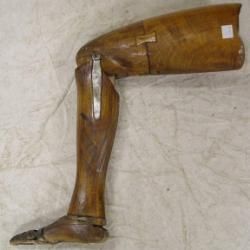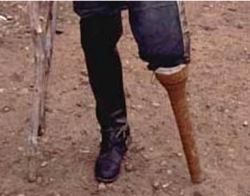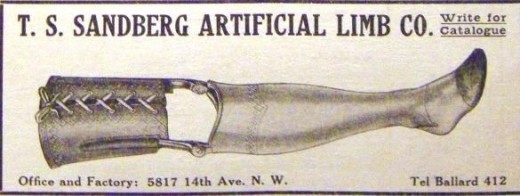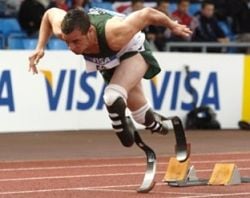Wooden Legs

The Early Days of Prosthetic Legs
News stories back in 2012 about athletes with carbon fiber limbs attempting to qualify for the Summer Olympics and the Paralympic Games caught my attention when at least one Olympic hopeful then, Oscar Pistorious of South Africa, was originally ruled ineligible because officials felt that his prosthetic legs gave him an unfair competitive advantage. My, how far medical science has brought us!
What once was a debilitating handicap that would confine a person to a wheelchair for the rest of their natural life is fast becoming a treatable condition with a great long term prognosis for a patient who has lost a leg.
Join me on a brief journey into the past history and forward into the future possibilities of prosthetic limbs.

The Early Days of Prosthetics
Limb loss in the 1500's through the 1700's often resulted in death. If blood loss did not claim the limb loss victim, an infection often did. Over time, antibiotics got better and many an amputee would live to hobble on one leg and get around with a crutch. Early prostheses were often cumbersome and very heavy.
During the American Civil War, many men from well off families lost limbs on the battlefield. Fortunately for these men, their long term prognosis for survival was good given the advances in medicine and so families began to look for ways for their loved ones to lead more normal, functional lives. Wooden "peg legs" and all manner of other prosthetic devices were fashioned and worn by men eager to resume active lives at home on the farm and in growing American businesses.
The Long Evolution to the Modern Prostheses

By the late 1800s in America, and as a direct result of the volume of military amputees from the Civil War, artificial limbs had evolved from heavy "fake" legs and pegs to lighter limbs with articulated ankles that allowed the "foot" to move much as a real foot would. Materials began to evolve from strictly wood to a combination of wood and early forms of rubber.
By the late 1800s and the early 20th century (the 1900s), surgeons were finding success using patients actual muscles and tendons to move the "new" limbs. The devices themselves continued to advance to include versions that extended above the knee thereby helping amputees with significantly more limb loss.
By 1920, physicians and surgeons were finding prosthetic uses for lighter materials like aluminum to make strong, durable, more manageable limbs.

Modern Carbon Fiber Prosthetic Legs
We've come a long, long way baby!
Yes, people still lose limbs and yes it's a horrible thing to happen to anyone. But, losing a limb no longer means the end to a rich full life to include participating in athletics if that's something of interest to the modern amputee.
Advances in both science and medicine have made it possible to have lightweight titanium and carbon fiber legs that are manufactured quickly to exact specs as measured by ultra modern imaging equipment. These legs are controlled by the wearers own muscles and tendons and, sometimes, by micro computer devices implanted within the recipient.
Prosthetic legs can now look, feel and perform as though real giving the wearer confidence and normal mobility. Spring loaded legs can allow athletes to continue to perform at high levels. Indeed, as we said in the opening, the "strides" in modern prostheses have been so amazing that amputee athletes are sometimes finding it difficult to prove that they have no advantage over other typically "able bodied" competitors.
Modern Marvels - Prosthetics
Fans of the History Channel program, "Modern Marvels" will enjoy this 2008 episode on prosthetics. While it does cover upper body prostheses, legs are prominently featured.
All About Prosthetics from Amazon.com
I learned a few things in the construction of this lens which was done, quite truthfully, in response to an old Squidoo challenge to use the wood theme they had released just prior to the publication of this lens - now a hub. What can you add to this topic? I'd love to hear it!













